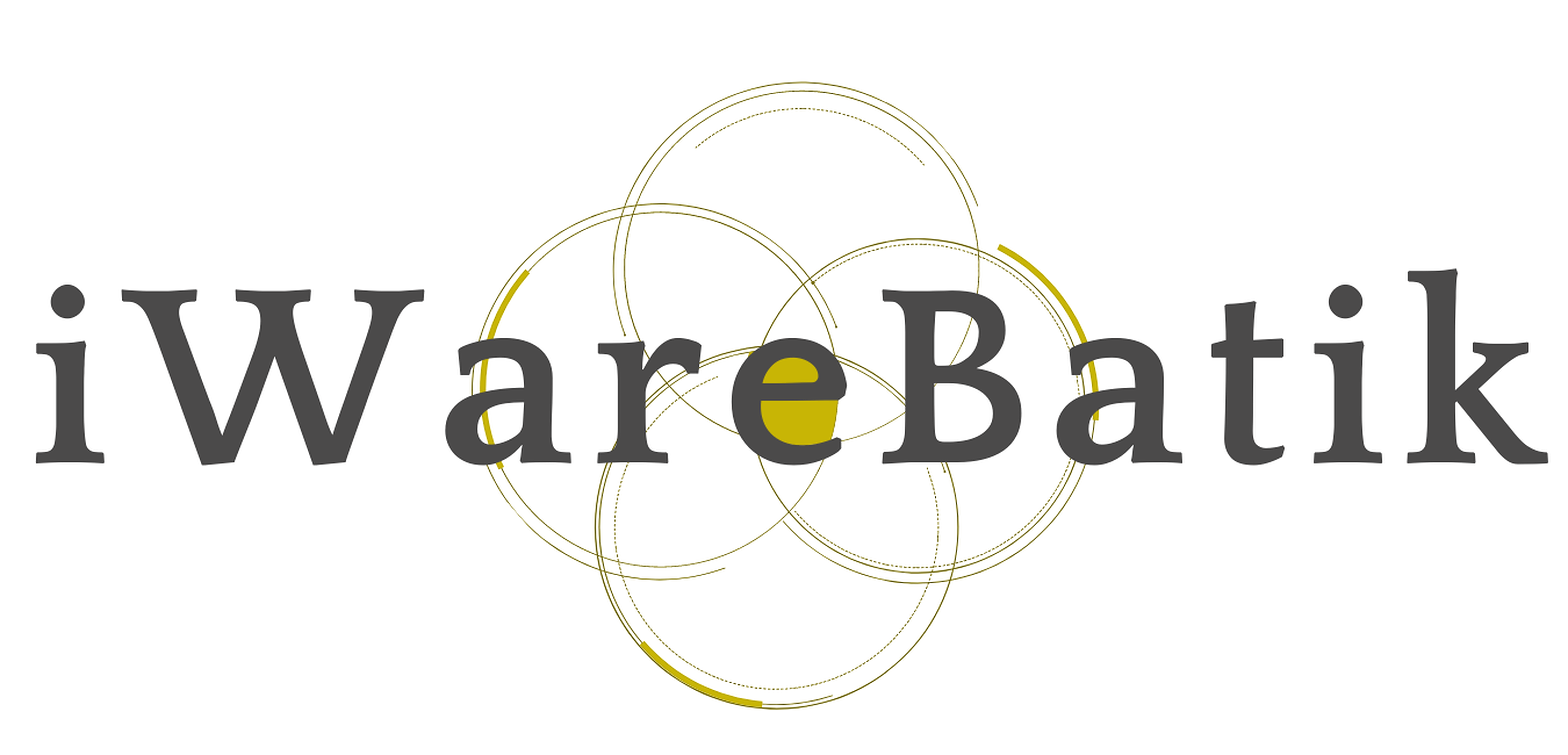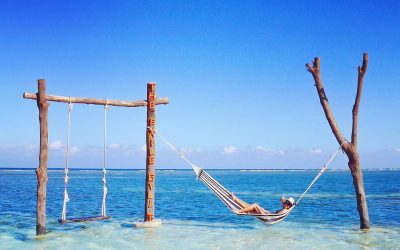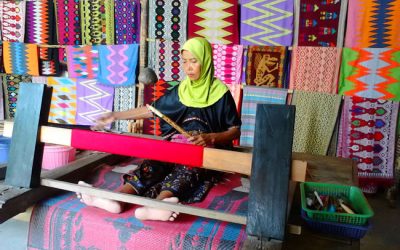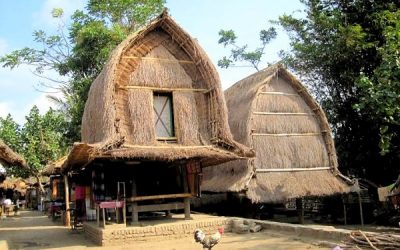Home / Batik Regions – Eastern Indonesia – West Nusa Tenggara / Rinjani – Mandalika UNESCO Global Geopark
Natural Destination
Experience the tropical nature!
Rinjani – Mandalika UNESCO Global Geopark
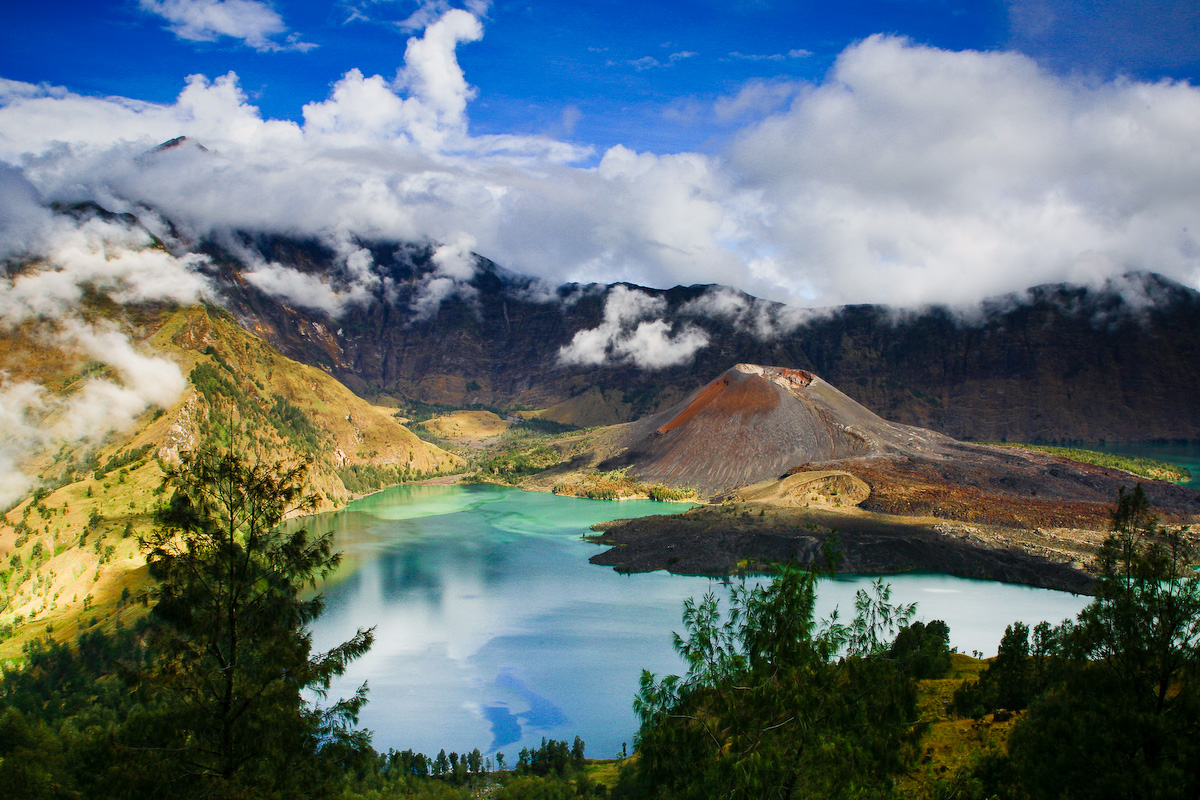
Rinjani Volcano and Segara Crater Lake in Lombok (photo: Mostbeautifulscenery)
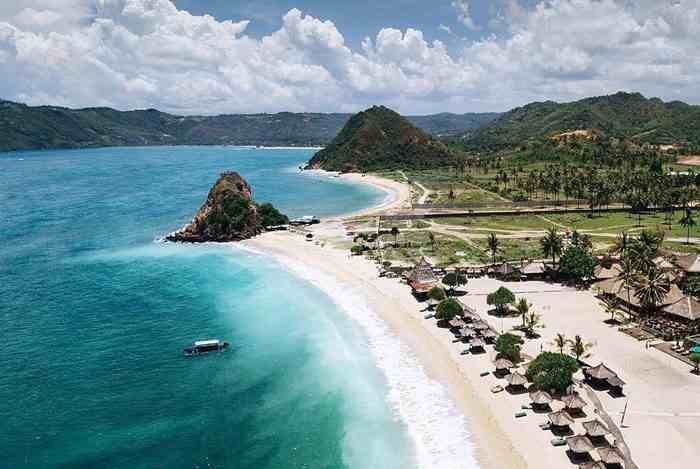
Mandalika Beach in Lombok (photo: Suara Jatim)
Rinjani – Mandalika – UNESCO Global Geopark
Once upon a time, the legend says that the beach of Mandalika is the site where the Princess of Mandalika sacrificed herself for the community of Lombok islands. Possessing great natural diverse landscape comprising savanna, tropical forest, and marine biodiversity, Rinjani volcano mountain including Mandalika coastal region were designated as UNESCO Global Geopark in 2018. The geopark region spans the area of about 2800 km², where certain spots are developed into several ecotourism sites offering varied cultural experience and natural activities. As the host of the next 2021 F1 MotoGP competition, Indonesian government is currently building an F1 circuit on the board of Mandalika coastal geopark. This project is also aimed at creating sustainable sport tourism which is also connected to the conservation of world class geopark. Visit Rinjani and have your most memorable vacation!
Tourist Attractions in West Nusa Tenggara
Gili Trawangan Beach
Do you ever imagine to get exiled on the beach with brilliant white sand and blue crystalline water?
Sukarara Textile Village
Located in Lombok island, this village is known for its flourishing weaving
Sade – Bayan Lombok Cultural Villages
Famous for its cultural destination, Lombok island of West Nusa Tenggara enchants
West Nusa Tenggara Batik Motifs
Daun Sirih
This motif illustrates betel leaves that are used by Lombok communities as traditional
Bale Lumbu
This motif signifies the welfare of the ancient Sasak society. Bale also symbolizes the
Tenun Bima
The motifs are adopted from Bima woven textile. This pattern has received a great
Discover
Indonesian
Batik
Motifs
Teguh Bersatu
This batik motif shows the strength of the people of Kupang. It also represents a sense of
Cengkeh
The clove flower motif is the main commodity of the Tolitoli Regency. This motif represents
Jupri Kembang Teh
Kembang Teh illustrates the tendrils of tea plants that grow in the highlands of
Biji Kopi
The coffee seeds motif illustrates the pride of local coffee specialities in
Besurek Rafflesia
The term “Basurek” refers to a textile that contains letters or inscriptions
Tongkonan
Toraja’s traditional house is called Tongkonan. Tongkonan is a place for
Tifa Totobuang
The batik motifs illustrate Maluku’s traditional music instrument called
Bintik Tujuh
The Bintik Tujuh (Seven Dots) motif has 7 white spots and green color gradation as
Kuda Kupang
Horses symbolize wealth. It contains noble values of virtuous characters that bring
Bultiya
The word ‘Bultiya’ is an acronym of the three major tribes in North Kalimantan, namely
Burung Bidadari
Bidadari birds are endemic birds in Halmahera. This motif represents an
Enggang Dayak
Local people beliefs that hornbills are an incarnation of the Commander of the Birds. It has supernatural
Tabir Tanjung
Tanjung flower is a type of Cherry tree flower, which is commonly found in
Karawo Pinang
Pinang refers to the Palm areca tree. This motif is considered as the original
Hiu Taliyasan
Indonesia is also home to the world’s largest fish, the whale shark (Rhincodon typus). Hiu Taliyasan refers to
Srimanganti
The name of the Srimanganti motif is derived from Palace’s hallway that connects to
Leuit Sijimat
This motif reflects the daily activities of the Baduy tribe in Banten. The main ornaments of batik motif consist of:
Besurek Rembulan
This batik illustrates praise for God who created the wonderful universe
Kasih Tak Sampai
‘Kasih Tak Sampai’ is an idiom in the Indonesian language which refers to
Singayaksa
The Singayaksa motif comes from the name of a place where Sultan Hasanuddin used to
Jumputan Bintang
The word Jumputan means the tie-dye technique, while the word “Bintang” refers to
Pati-Pati Pinehiku
It symbolizes the hierarchy in society and the social status of the Mekongga
Malinau Cultural Festival
You will witness a unique competition that might not be found other than in
Awan Berarak
Awan Berarak is a combination of Dayak motifs and Malay patterns. The word ‘Awan Berarak’ means the
Tikar Natuna
The Tikar Natuna motif is adapted from the traditional making of pandanus mats in
Tampuk Manggis Sasirangan
The motif illustrates the philosophy of the mangosteen fruit, which is
Gajah Way Kambas
The motif illustrates the Lampung’s natural reserve, the Way Kambas. it also symbolizes
Pinawetengan
The Pinawetengan Batik pattern was taken from a prehistoric inscription in
Sido Mulyo
Sidomulyo is one of the classical motifs, which is specifically used for the bride’s costume in
Bomba Mawar
This motif means sacred love for family, kingdom, and God; It also illustrates
Tengkawang Ampiek
With its many advantages, the Dayaks use this leaf in ritual ceremonies. This plant is a symbol of
Gumin Tambun
Based on Hindu mythology, this motif symbolizes lucks, abundant wealth, and
Kaganga Tanah Rejang
If Batik Besurek combines Arabic calligraphy motifs, then the Kaganga batik takes
Gurdo Solo
Gurdo or garuda bird is the mount of the Indian god Vishnu. As the Sun Bird,
Desa Na Tolu
The Desa Na Tolu characteristic pattern symbolizes the Batak philosophy of existence and
Sandeq
Sandeq Boat is a symbol of the maritime importance of the West Sulawesi region. The greatness of
Salakanagara
Salakanagara batik motif illustrates the first kingdom in the Betawi land
Tubo Kelapa
Coconut tree is a symbol of a good character and strong mentality. It illustrates the more success a person, the more
Insang Ikan
Insang refers to the gills of the fish. This is a typical pattern of Malay ethnic who inhabits
Tangerang Herang
Tangerang Herang motif is a symbol of Tangerang city. The Tangerang Herang batik motif consists of
Mahkota Siger
Siger is the crown of a noblewoman in ancient time. It is a symbol of femininity, strength, and
La Galigo
La Galigo is a literary work of the Buginese Epic that has 300 thousand epic lines. It is considered even
Ikan tambal
The word “Ikan” refers to fish. The philosophical meaning of Ikan Tambal means is
Gorga Simeol-Meol
The Gorga Simeol-meol is a pattern of plant tendrils. it is regarded as a symbol of longevity and
Tanah Liek
The word “Tanah Liek” refers to clay in Minang language. It is also known as
Durian Pecah
Broken Durian motifs depict the foundation of faith. The second half signifies the mastery of
Kerawang Tegak Aceh
The Vertical Upright (Kerawang Tegak) Motif symbolizes a person who has a strong
Pala Salawaku
This motif illustrates the unique weapons of the Maluku region, namely
Dayak Taghol
Dayak Taghol has a distinctive style of four curved lines and small dots. This motif represents
Taiganja
Taiganja is a precious gold pendant that shows the social status of the Kaili family. It is
Angsa Duo
According to legend, the Angso duo batik motif is a pair of swans that are believed to have led Princess
Ake Patra
Ake is related to the divinity and the composition of the universe. It is a symbol of
Pattimura
Pattimura is the name of an Indonesian hero who fought against colonialism in
Parang Seling
Parang Seling or “alternating daggers” is a royal batik motif. It is a feminine variant of
Sekar Jati
Sekar means flower and Jati refers to teak trees that symbolizes a strong mental character that
Raja Ampat
Raja Ampat motif represents the marine life at Raja Ampat archipelago in
Lipaq Sabe
Lipaq Saqbe contains a simple geometric classical motif with various flower decorations. This textile is
Daun Sirih
This motif illustrates betel leaves that are used by Lombok communities as traditional
Gonggong Beruntun
This motif illustrates that a person should maintain a positive attitude and
Gentala Arasy
Built as high as 80 meters, the tower also highlights the historical side of
Wakatobi
It symbolizes the coastal beauty of the Wakatobi island and the symbol of Patra symbolizes
Bale Lumbu
This motif signifies the welfare of the ancient Sasak society. Bale also symbolizes the
Merak Ngeram
The hatching peacock motif has a very deep meaning which refers to the sacrifice and
Honai
The Honai is inspired by the traditional house of the Papuan community living in
Sero Tangga
The Sero Tangga illustrates an endearing feeling and sacrifices of a person to fulfil
Ukir Sentani
The Ukir motif is a batik motif that is inspired by various traditional Sentani wood carvings
Kain Cual
Cual textile tradition has existed since the 17th century. The word “Cual” refers to
Gigi Haruan Lidi
The Gigi Haruan Lidi motif is taken from the name of the cork fish and is a symbol of
Gamolan
This motif illustrates Gamolan, a bamboo musical instrument of Lampung that is
Tenun Bima
The motifs are adopted from Bima woven textile. This pattern has received a great
Lok Baintan Floating Market
As you can imagine, the most authentic thing is that you can buy things and even
Paqbarre Allo
The word “Barre” means round and “Allo” means the sunlight. This motif is interpreted as
Gonggong Siput
Gonggong (Strombus Turturella) is one type of sea snail found around
